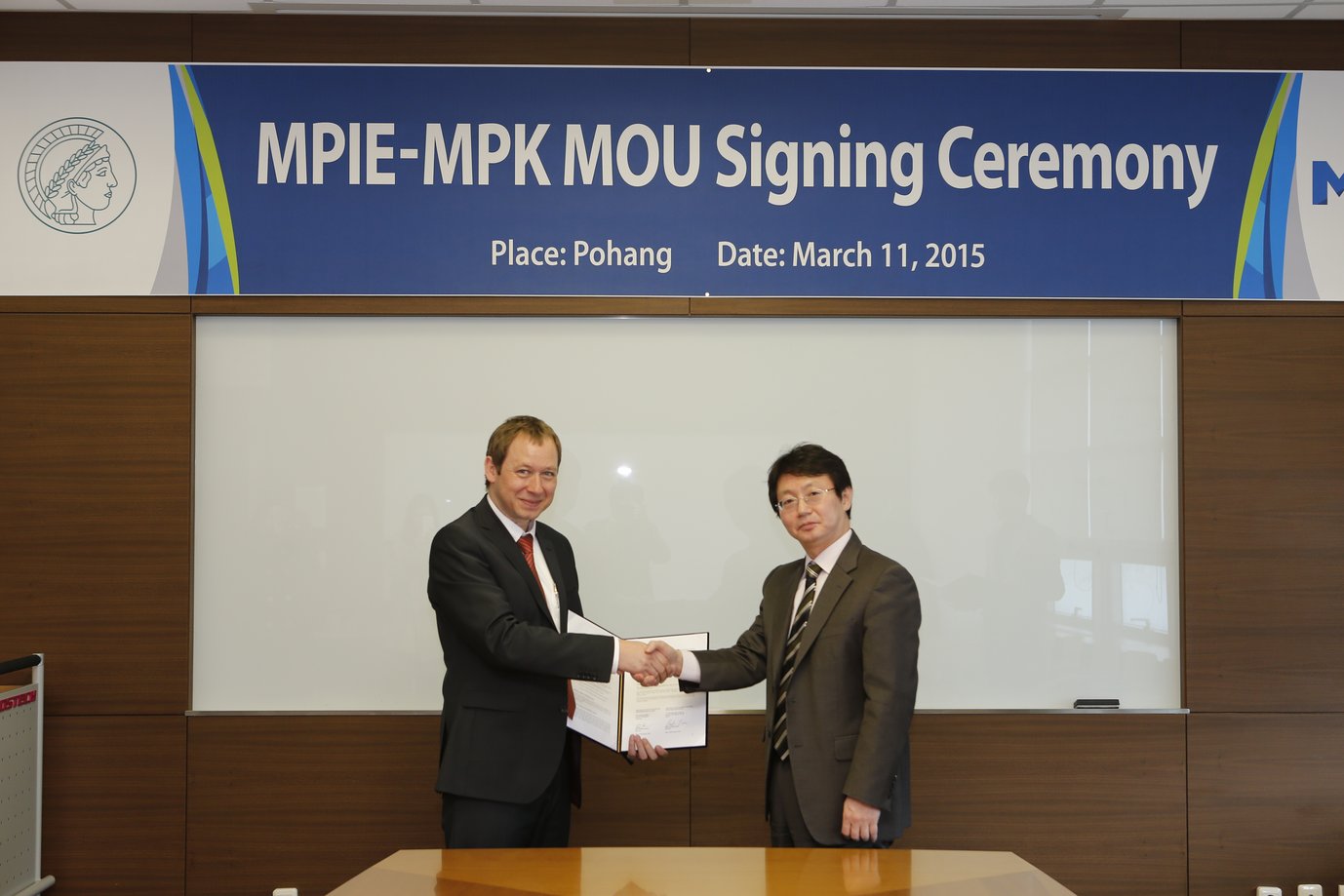Collaboration with South Korea opens new dimensions of transmission electron microscopy
The Max-Planck-Institut für Eisenforschung (MPIE) and the Max Planck POSTECH/Korea Research Initiative agreed on intensifying their collaboration by signing a memorandum of understanding on 11th march 2015. The collaboration will focus on in situ transmission electron microscopy to improve the understanding of phase transformations and failure of materials.

As a first step the department “Structure and Nano-/Micromechanics of Materials” of Prof Gerhard Dehm (MPIE) will work together with POSTECH. The department performs basic research in the field of local deformation processes as a key to resolve and understand the mechanisms initiating plasticity and causing failure of advanced materials. The department has a special expertise in measuring mechanical processes with TEM and is currently working with the department ”Interface Chemistry and Surface Engineering” to extend in situ transmission electron microscopy (TEM) to study electrochemical processes.
POSTECH is a Korean elite university with a focus on physics, chemistry, material science and engineering. The two partners will cooperate mainly in the field of in situ TEM to get a better understanding of phase transformations, the proceeding of failure and the measurement of local elongation fields of metallic materials.
The memorandum of agreement with POSTECH is the first step of building up a trilateral research initiative between the MPIE, POSTECH and the University of Berkeley (California, USA). The collaboration with the University of Berkeley is especially interesting in the field of methodical developments of in situ TEM measurements. Whereas currently used cameras for in situ TEM measurements can take 25 images per second, Berkeley developed a technique which is able to record 1000 images per second. This advancement makes it possible to observe processes which take place in milliseconds at the nanometre length scale thus opens news dimensions in materials research.
The collaboration involves the exchange of doctoral students and the usage of each other’s facilities.
